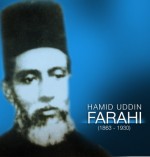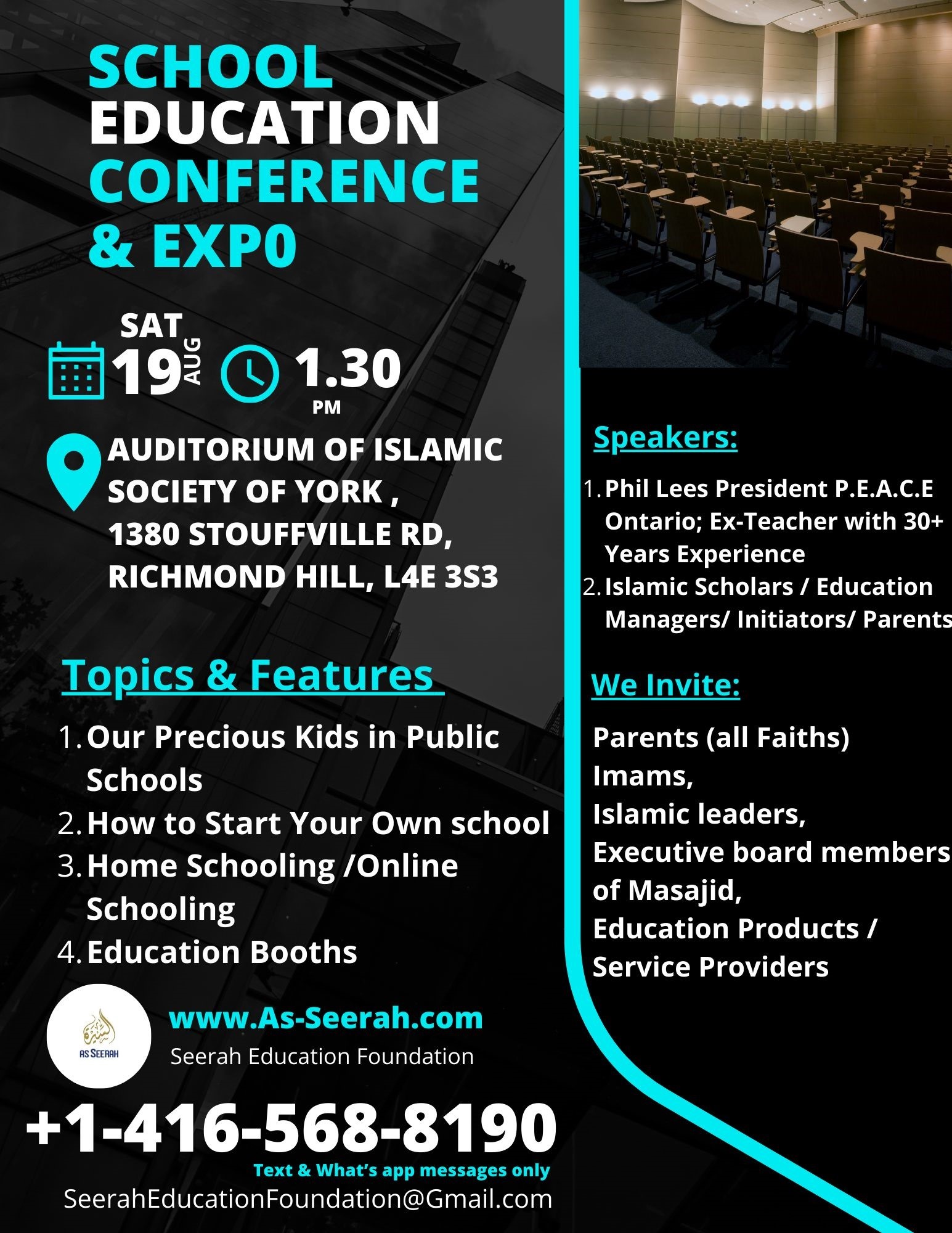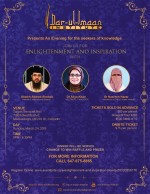
Imam Hamiduddin Farahi: Pioneer of Concept of Coherency in Quran in Modern Time
-
Alternate Education
- at 31 December 2016
By Afzal Usmani
It will not be an exaggeration to say that Maulana Hamiduddin Farahi is the most celebrated Quranic scholar Mohammadan Anglo Oriental College and Aligarh Muslim University have ever produced. He is known for his groundbreaking work on the concept of Nazm, or Coherence in the Quran. He was instrumental in producing highly scholarly works, which proved that the verses of the Quran are interconnected in such a way that the Surah, or Chapters, of the Quran form a coherent structure, having its own central theme, which he calls ‘umud. He also started writing exegesis, or tafsir, in accordance with the principles which were evolved by him but unfortunately he could not complete it. The Muqaddamah, or the Introduction, to this tafsir is an extremely important work on the theory of Nazm in the Quran as also on the general principles of the exegesis of the Quran.. The famous Tafsir, “Tadabbur-i Quran†by his disciple and intellectual heir, Maulana Amin Ahsan Islahi, embodies these principles particularly the concept of Nazm, or Coherence. Amin Ahsan Islahi has concluded in the light of some evidence contained in the preface of Farahi’s Tafsir-i Nizam al Quran that he it was during the time when he was still a student at Aligarh that Maulana Farahi started pondering over the Holy Quran, which later resulted in writing Arabic commentary of a number of Surahs of the Quran according to the special methodology that he has been able to evolve.
Maulana Farahi was born on Wednesday 18 November 1863 (6 Jumada al Ukhra - 1280 Hijri) in the aristocratic and educated family of Haji Abdul Karim and Mrs. Muqimunnisa Begum in the Phariha, a village in Azamgarh. His grandfather Mr. Qurban Qunbar was a well-known poet and a practicing lawyer of Azamgarh. Mr. Qurban Qanbar was maternal grandfather of Allama Shibli Nomani and hence Maulana Farahi and Allama Shibli Nomani were first cousins. He started his primary education with the memorization of Quran and in 1873 at the age of 10 he completed the memorization of Quran within a year under the able guidance of Hafiz Ahmad Ali of Rajapur Sikraur, Azamgarh. In accordance with the tradition of the time, he studied Persian from Maulvi Mahdi of Chitara, Azamgarh and around 1876 he started learning Arabic from his cousin, Allama Shibli Nomani, who was living in Azamgarh at that time. While he was still only 16 years old, Maulana Farahi wrote a Persian “Qasidah†of 28 couplets in praise of Ottoman Khalifa, Sultan Abdul Hameed Khan, which earned the applause of some of the most eminent scholars of the time. After completing his Arabic education in 1883, he joined the circle of Maulana Abdul Hai Firangi Mahali in Lucknow for the study of Fiqh (jurisprudence) under him. After Lucknow he studied Arabic Literature from Maulana Faizul Hasan Saharanpuri in Oriental College Lahore. He also spent some time in Rampur with Maulana Irshad Husain Mujaddidi who was also a teacher of Allama Shibli Nomani. On 4th June1882, Maulana Farahi got married to Sairah Bibi, niece of Allama Shibli Nomani. Sairah Bibi’s mother was Maryam Bibi and father was Abdul Majid. They were residents of Bindawal, Azamgarh, birthplace of Allama Shibli Nomani. At a time when modern education particularly learning of English language was frowned upon among the traditional Muslims, Maulana Farahi broke this taboo and did his Middle School and Metric from Karnailganj School, Allahabad, before joining Mohammadan Anglo Oriental College in 1891.
After completing traditional education, Maulan Farahi joined M.A.O. College in 1891 and completed F.A. and B.A. from the College in 1893 and 1895 respectively. MAO College was affiliated to Allahabad University at that time. He also served as a faculty member (Assistant Professor of Arabic) of M.A.O. College from February 1907 to May 1908. The details of his association with MAO College and his academic and literary work in the college will be summarized in the later part of this article. He started his career as a teacher of Arabic language in Madrasah al-IslÄm, Karachi where he remained for over a decade (1897-1907). During his stay in Karachi (in about 1900) he was appointed an interpreter to Lord Curzon, the British Viceroy to India, on the occasion of latter’s diplomatic visit to the Arabian Peninsula. Later, FarÄhÄ« joined, as Principal, DÄr al-‘UlÅ«m HaydarÄbÄd (1914-19). Even though he was involved in the affairs of Madarsat ul Islah (School for Reform) from its inception in 1908, he was appointed its Director/Nazim in 1916. He performed his duties of Director from Hyderabad till 1919 and then moved back to his home town and devoted his time to the task of developing Madrasat ul Islah. He spent rest of his life there training a number of students including Maulana Amin Ahsan Islahi to continue his work. He also served as Founding President of Darul Musannefin Shibli Academy when it was founded on 21st November 1914, just 3 days after the sad demise of his teacher, Allama Shibli Nomani to establish a “Think Tank†for the Muslims of India. The primary objective of the Academy was to nurture and sustain a body of scholarly authors and provide a congenial environment for scholars to create, compile and translate literary works of high scholastic and historical value and to undertake printing and publication of the literary works of the Academy.
Maulana Farahi wrote in Arabic as he considered the entire Muslim community to be his audience. Farahi's chief scholarly interest was the Quran, the focal point of most of his writings. The conspectus (?) He has an ambitious plan of writing on a variety of themes related to the Quranic Studies. As a result, he used to work on many different themes simultaneously. It was only natural in this situation that when he died these works were at different stages of preparation. Some books were complete while some others still needed some chapters to be added. Some others contained only few pages and still others were in the form of notes. While those books which were complete or semi complete were published earlier, during the recent times an effort is being made to publish even those books which were thoroughly incomplete or consisted of only notes. Maulana Farahi taught Arabic at various institutions, including M.A.O. College at Aligarh and Dar-ul-Ulum., Hyderabad. During his stay at Hyderabad, Farahi conceived the idea of establishing a university where all religious and modern sciences would be taught in Urdu. The scheme he prepared for this purpose later materialized in the form of Jamia Osmania (Osmania University), Hyderabad. He subsequently left his lucrative job and returned to Azamgarh, where he took charge of Madrasat ul Islah at Sari Mir, an institution founded by Maulana Mohammad Shafi of Seedha Sultanpur which was developed on the basis of educational ideas of Shibli Nomani and Farahi. Maulana Mohammad Shafi was father of Prof. Khalilur Rahman Azmi, the eminent Urdu poet and litterateur, who was associated with the Department of Urdu, Aligarh Muslim University. Maulana Farahi had served as Nazim (chief administrator) of Madrasat ul Islah almost since its inception, but other engagements kept him from becoming actively involved in its affairs. From 1919, when he returned to his native place till his death in 1930, Farahi devoted most of his time and energy managing the affairs of Madrasat ul Islah and teaching and training his disciples to continue his mission after him. Those whom he taught include Akhtar Ahsan Islahi and Amin Ahsan Islahi, who received special training from him. Farahi’s chief scholarly interest was the Quran, the focal point of most of his writings. The most significant contribution of Maulana Farahi is Tafsir-i- Nizam al- Quran (commentary of fourteen Surahs of the Holy Quran). Many of his works were farfrom complete and even some of them still in from of notes that were later complied by his students and other scholars including Maulana Akhtar Ahsan Islahi, Maulana Badruddin Islahi, Dr Muhammad Ajmal Islahi and Prof. Ubaidullah Farahi (grandson of Maulana Farahi). His other notable works include: Mufradat al Quran (Vocabulary of the Quran), Asalib al Quran (Style of the Quran),Dalail al- Nizam( Arguments of Coherence) Jamhara-tul-Balaghah (Manual of Quranic Rhetoric) and Im‘aan fi Aqsam al Quran (Study of the Quranic Oaths),Taliqaat Fi Tafsir al- Quran al-Karim and Collections of Arabic and Persian Poems. It goes to the credit of his chief disciple Maulana Amin Ahsan Islahi that he introduced his Arabic commentary of the Quran and other Arabic works on the Quranic studies to the Urdu readers.
Maulana Farahi was very careful about his health and used to undertake regular physical exercise to keep him active. He suffered from headaches and liver infection. He was under treatment of Dr. Hafiz Hafizullah of Bakhra, Azamgarh who was posted as the District Civil Surgeon in Mathura during 1930. Maulana Farahi went to Mathura for treatment and could not recover from the surgery and died on 11th November 1930 in Mathura and was buried there. His disciple Maulana Amin Ahsan Islahi and his brother Haji Rasheeduddin were present at his funeral. News of his death sent shock waves in the religious and academic circles of Indian Muslims. Here are few of the responses from his elders, contemporaries and people, who dedicated their life after him in the pursuit of true understanding and propagation of Quranic message and extension of his mission,
“The Ibni Taimiyah of this age has passed away on 11th November 1930 (19th Jamada al--Ukhra, 1349 Hijrah). His brilliance is very unlikely to be surpassed now and his comprehensive command of oriental and occidental disciplines is indeed a miracle of this era. A profound scholar of the Qur'an, a unique personality, an embodiment of piety, an unfathomable sea of knowledge, an institution within himself, a literary genius and a researcher of prodigious intellect. It is a matter of great sorrow that such a brilliant personality graced the world and then perished, but the world could not recognize its grandeur.†[1]
These are words of Maulana Saiyyid Sulaiman Nadvi, intellectual heir of Allama Shibli Nomani and Founding Director (Nazim) of Darul Musannefin Shibli Academy about Maulana Hamiduddin Farahi, who was founding President of Darul Musannefin Shibli Academy, Azamgarh, India.
Maulana Abul Alaa Mawdudi writes, "It has been generally accepted that in recent times, very few have reached the position Allama Farahi has been blessed with by the Almighty as far as thinking over the Qur'an is concerned. He has spent the major part of his life pondering on the meanings of this Book, and has written such a masterly commentary on the Qur'an that it is difficult to find its parallel even in the early period..." [3]
Maulana Manazir Ahsan Gilani writes, "The revivalist movement launched by Shah Wali Ullah [in the eighteenth century], in recent years has drawn inspiration from "Tafsir-i Nizam-ul-Qur'an" the work of a distinguished scholar, Maulana Hameeduddin Farahi. Among other features of this commentary (ie relationship between the Qur'an and the Bible, and various literary discussions), its salient feature is the unprecedented attempt in it to bring out the coherence between the verses. It is this coherence which sometimes provides enough evidence that the Qur'an is a Divine Book."[4]
Maulana Abdul Majid Daryabadi writes, "In this age Allama Hameeduddin Farahi is the most outstanding personality as far as Qur'anic Studies are concerned. He not only occupies a distinguished position among the scholars of recent times, but, in fact, has discovered some new principles for the interpretation of the Qur'an. The foremost among them is his philosophy of coherence in the Qur'an." [5]
Association with M.A.O. College Aligarh:
Maulana Farahi’s 2-tire stay in Aligarh was an important halt in his journey of transformation from Mohammad Abdul Hamid to Imam Hamiduddin Farahi. Maulana Farahi has a very close association with Aligarh, as his cousin brothers Mehdi Hasan and Allama Shibli Nomani were associated with M.A.O. College before his joining M.A.O. College on 19th May, 1891. Mehdi Hasan, younger brother of Allama Shibli Nomani, was a student of M.A.O. College and Allama Shibli was a professor of Persian and Arabic at the college. Unlike others, he joined M.A.O. College at a mature age of 27 ½ years in F.A. (Intermediate). Even before joining M.A.O. College, he was well known in the circles of Arabic scholars for his knowledge and literary skills. Even Sir Syed Ahmad Khan was aware of this and wanted Principal Theodore Beck to exempt him from Arabic and oriental studies courses. During his first year of F.A. in 1891, at the instance of Sir Syed, he prepared Persian version of the select parts of Tabaqat-i- Ibn Sad. It was published in1891and included in the curriculum of the College. Maulana Farahi completed F.A. with 2nd division in 1893. This is the same year when Maulana Shaukat Ali and Dr. Abdul Haq also completed F.A. from M.A.O. College. In 1893, no one secured 1st division in Allahabad University from M.A.O. College. After completing F.A., he joined B.A. He was awarded several scholarships during his studies in the College including those from the Nawab Azam Yar Jung Maulavi Chiragh Ali Fund, Nawab Waqarul Mulk Mushtaque Husain Fund and Haji Ismail Khan Loyal Scholarship. At the suggestion of Allama Shibli, Sir Syed engaged him for deciphering and correcting a moth-eaten treatise of Imam Ghazali, which was being edited for publication. He was still a student when at the instance of Sir Syed he translated the Arabic treatise of Allama Shibli “Tarikh-Bada’ al Islam†which was printed by the College under title Tarjumah-i- Farsi Risalah Bada’ al Islam and included in course of studies for Theology.
Maulana Farahi was member of different literary societies of the college including, Lujnat al- Adab and Ikhwan al- Safa. Lujnat al- Adab was established by Allama Shibli to train students of the College for speaking and writing in Arabic. Ikhwan al- Safa was established in 1890 for training the students in Urdu speech and essay writing. Allama Shibli and Prof. Thomas Walker Arnold also participated in its programmes. During his B.A. 1st year in 1894, Allama Shibli Nomani received the title of Shams ul Ulama from the Government. A grand function was organized by the College to felicitate him. Sir Syed and other dignitaries attended the function, which was presided by Nawab Muhsinul Mulk. Maulana Farahi composed an Arabic poem in praise of his teacher Allama Shibli Nomani and presented it in the function. On this occasion, Allama Shibli also presented a qasidah (ode) in Arabic which contained 16 verses.
An erudite scholar, Maulana Farahi commanded knowledge of a number of languages including Hebrew and English. He learnt Hebrew from the German Orientalist Joseph Horovitz (1874-1931) who was professor of Arabic at the M.A.O. College. Horovitz studied Arabic with Farahi. After completing his B.A. from M.A.O. College, he started looking for a job in 1895. In 1896, he wrote to Allama Shibli to obtain a letter of recommendation or certificate from Sir Syed probably in connection with service in Madrasat ul Islam, Karachi. Allama Shibli advised him to write directly to Sir Sayyed giving reference to his Persian translation of Bada’ al Islam and Tabaqat-i- Ibn Sad. It is however not known for certain whether Maulana Farahi wrote to Sir Syed or not? But Syed Sulaiman Nadvi had mentioned that Sir Syed gave certificate to Maulana Farahi.
Maulana Shibli Nomani had very high regard and admiration for Maulana Farahi and writes about him, "It is generally believed that a talented person can in no way remain unknown to the world. Experience as well as history bears testimony to this. However, each rule has an exception. Maulvi Hameeduddin ... is a good example of such an exception ... In this age, his treatise "Tafsir Nizam-al-Quran" is as essential and beneficial to Muslims as pure water is to the thirsty and exhausted." [2].
Even though Allama Shibli had great regard and admiration for Maulana Farahi, he seems to have considered himself a better Arabic scholar than Maulana Farahi. He, however, considered Maulana Farahi to be better at Persian than himself. In 1904, the M.A.O. College administration requested Allama Shibli to prepare an address in Persian to be presented to Prof. Thomas W. Arnold at his farewell party. Allama Shibli wrote to Maulana Farahi, who was working at that time as teacher in Madrasat ul Islam, Karachi to prepare the address and send it to Prof. Abul Hasan of M.A.O.College as he believed that the latter would write better Persian than himself.
In January 1907 under a special monthly grant of one thousand rupees from the British Government for the development of teaching of Arabic in M.A.O. College, the department of Arabic was established and Prof. Joseph Horovitz (a German scholar) was appointed as Professor. An offer of Assistant Professorship was also made to Maulana Farahi and he joined M.A.O. College as Assistant Professor of Arabic on1st Feb.1907 at a monthly salary of two hundred rupees. Mr. William A.J. Archbold was at time Principal of the College. Mr. Archbold served as Principal from 16 October 1905 to 31 October 1909. For about three months, Maulana Farahi stayed in the College Guest House. For a month he also resided in a two storied house in front of Aftab Hostel (north of Kachchi Barrack).After summer vocations, he shifted his residence to a rented house at Rs.15/-per month in mahallah Bani Israiliiyan in the Upper Fort (popularly known as Upper Kot) locality of the city. Maulana Farahi has a very cordial and friendly relationship with Prof. Joseph Horovitz who was Professor and Head of the Department of Arabic. Prof. Joseph Horovitz studied the high standard books of Arabic literature under the guidance of Maulana Farahi and he himself learned Hebrew from J. Horovitz, until he became competent enough to study and understand the Hebrew books. While teaching Arabic to his son, Muhammad Sajjad, and Abad Ahmad (s/o Jb. Aftab Ahmad Khan) he prepared a treatise (Asbaq al-Nahw) on Arabic grammar (nahw/syntax). It was first published from Muslim University Press in 1923 and later became quite popular as a textbook of the Arabic grammar.
At that time, Tabaqat-i- Ibn S’ad (the famous Arabic biographical work compiled during the Abbasid caliphate) was under print in Europe and its proofs used to come to Prof. Horovitz for checking. He seems to have felt some difficulty in this work and therefore he entrusted the work to Maulana Farahi who used to check the proofs regularly with great efficiency. The first edition of the work (entitled Kitab al-Tabaqat al-Kubra, published in nine Vols. during 1905-1921) contained the name of Joseph Horowitz as one of the editors along with Edward Sachau, Julius Lippert, K.V. Zettustein & C. Brockelmann.
In 1907, Anjuman-i- Mutarjimin was established in Aligarh with the main objective of translating the useful English books into Urdu. It consisted of 12 members. Maulana Farahi and Maulana Wahiduddin Saleem were selected as its editors. They were also required to prepare a lexicon giving explanation of English terms of different disciplines in Urdu and providing also the Urdu equivalent of these English terms.
At the instance of Allama Shibli, he stayed in Nadvatul Ulama for about one month during October-November, 1907 and taught Al- Durus al- Awwaliyyah fi al- Ulum al- Tabiyyah (a book of modern philosophy / natural sciences), published from Beirut to some students. Later, a student was sent by Nadvah with scholarship (wazifah) to Aligarh to study this book under the guidance of Maulana Farahi, but it was discontinued after some time due to his departure for Allahabad towards the end of May 1908.
Maulana Farahi, as stated earlier, had started to ponder over the meaning of the Quran during his student days in Aligarh. This enormously increased during the second phase of his stay at Aligarh as is evident from the statement of Maulana Habibur Rahman Khan Sherwani given in a letter to Saiyid Sulaiman Nadvi that Maulana Farahi while working as Assistant Professor, remained occupied with thinking over the Holy Quran and for this purpose he daily spent about six hours early in the morning It was also stated by Maulana Sherwani that Maulana Farahi used to tell him (whenever he chanced to meet him) the result of his pondering over the Quran (Saiyid Sulaiman Nadvi, Yad-i- Raftagan, Darul Musannefin, Azamgarh, 1986, p.134). The fact that Maulana Farahi started tadabbur fi al-Quran while he was still a student at Aligarh, is a matter of great importance this, a memorable event and a great achievement of his Aligarh life. It resulted in his marvellous Arabic commentary (Tafsir-i- Nizam al- Quran) and other significant contributions to the Quranic studies. It is also important to point out that according to Saiyid Sulaiman Nadvi, Maulana Farahi has started not only thinking over the Quran during his Aligarh life, the compilation of his commentary also began during this period (the first fruits of his thinking came out while he was teaching at Karachi).
On being appointed as Professor of Arabic in Muir College, Allahabad, Maulana Farahi left Aligarh on 31 May 1908 on 6 months leave. In the last week of Nov.1908, he applied to the A.M.O. College for extension of his leave for further 6 months. Most probably it was not granted. In the salary register of the College, for the month of June only his name is mentioned and from July to December 1908- “Leave without payâ€- is noted against his name. In the beginning Maulana Farahi did not resign from M.A.O. College and took leave to join Muir College, Allahabad. The leave was not extended after six months and he decided to continue in Muir College, Allahabad.
Maulana Farahi was a regular member of M.A.O. College Old Boys Association which later became AMU Old Boys Association and made contributions and donations to it as and when needed or demanded. His political views were more close to the nationalist group of Aligarh Movement leaders and he developed a very cordial relationship with Maulana Mohammad Ali Jauhar, the founding Vice-Chancellor of Jamia Millia Islamia. Maulana Mohammad Ali Jauhar was almost 15 years younger to him but both have great respect for each other. Maulana Farahi regularly visited newly established Jamia Millia Islamia at Aligarh. Maulana Jauhar also paid at least one visit to Madarsat ul Islah, Sarai Mir, Azamgarh to meet Maulana Farahi and witness his work in Madarsat ul Islah.
Vision of Maulana Farahi (Fikr-e-Farahi):
It is known from Maulana Farahi’s own statement that he started pondering on Quran while he was still a student at Aligarh. However, his biographies are silent about the reasons behind it. It would seem to have emanated from his concern for the plight of the Muslims in India, which was a subject of general concern at Aligarh in those days. When he started thinking about the Muslim situation in India the models of Aligarh and Deoband were available to him which sought in their own way to solve the problem. But he does not seem to have been satisfied with either. After close analysis of Islamic history, he seems to have concluded the reason of the suffering of the Muslims was their indifference towards the Quran and the situation could be redressed only through return to the Quran. This could be possible only when there is unanimity in the interpretation of the Quran. This needed a new methodology for the interpretation of the Quran, which could eliminate the possibility of difference of opinion, which was responsible for pitting one faction of the community against the other. This objective he wanted to achieve through the methodology of the interpretation of the Quran that was developed by him and that is now widely known as Nazm-i Quran. It is important to remember that the need to return to Quran and to develop a new methodology for the interpretation of the Glorious Quran was felt while Maulana Farahi was still a student at Aligarh.
Maulana Farahi was a firm believer of the nobility of Quran, its divine principles of salvation and guidance for humanity. He had done an in-depth study and analysis of the history of Muslims. Based on his understanding of Quran and conditions of Muslims, he had a complete vision of reforms based on the Quranic guidance and principles. His vision is broadly classified to three main components:[12]
1. Commentary of Quran based on the principles of Coherency
2. Islimisation of Knowledge (Purification and Modernisation of Literature based on the Quranic Principles)
3. Reformation of Educational System based on the Quranic Principles
Commentary of Quran based on the principles of Coherency:
Maulana Farahi introduced a new dimension in the commentary of Quran based on coherence and principle of central theme (Umud) of the chapters (Surah) in Quran.
He founded the view that the Quran possessed structural and thematic nazm (coherence; meaningful arrangement). The main features of the Nazm may be summarized thus:
1. The surahs of the Quran are divided into seven discrete groups. Each group has a distinct theme. Every group begins with one or more Makkan Surah and ends with one or more Madinan Surah. In each group, the Makkan Surahs always precede the Madinan ones. The relationship between the Makkan Surahs and Madinan Surahs of each group is that of the root of a tree and its branches.
2. In every group, the various phases of the Prophet Muhammad’s mission are depicted.
3. Two surahs of each group form a pair such that each member of the pair complements the other in various ways. Surah Fatihah, however, is an exception to this pattern: it is an introduction to the whole of the Quran as well as to the first group which begins with it. There are also some surahs which have a specific purpose and fall in this paired-surah scheme in a particular way.
4. Each surah has specific addressees and a central theme around which the contents of the surah revolve. Every surah has distinct subsections to mark thematic shifts, and every subsection is paragraphed to mark smaller shifts.
A complete Tafsir of Quran based on these principles could not be materialized due to the death of Maulana Farahi. But he laid down the guiding principles and left behind Tafsir of few Surahs to elaborate his principle of coherence. But his student and heir Maulana Amin Ahsan Islahi presented these principles in more methodical way in the complete Tafsir of Quran know as Tadabbar-i Quran.
Islamisation of Knowledge (Purification of Literature based on the Quranic Principles):
Maulana Farahi realised that un-Islamic thoughts and reasoning were infused into the Muslim literature and culture, which has become one of the main reasons behind the ideological differences amongst them and their fall. He was convinced that the elements of un-Islamic thoughts are so deeply infused in Islamic literature and culture that it is very difficult for individuals to identify and isolate them. This conviction made him to think for the Purification of Literature based on the Quranic Principles also known as Islamisation of Knowledge. This was a difficult task and required lots of resources. He could not do much but his books Jamharat ul-Balagha, Mufradat ul-Quran, Fi-Malakut Allah and Al-Qaaid-Ila Uyun al-Aqaaid constituted a important stage in this direction. In the modern time, he is pioneer of this concept of Islamisation of Knowledge.
Reformation of Educational System based on the Quranic Principles:
Maulana Farahi was of the opinion to reform educational system. He planned to develop an educational system where Quran and its thoughts should hold central stage and everything should be around it. The education of Hadith and jurisprudence of Islam should be unbiased and free from the conflicts of different schools of thoughts. Unnecessary education of philosophy and Ilm-i-Kalam should be done away and Arabic literature should be introduced to the curriculum. Modern and technical education should be introduced in the system.
Maulana Farahi chose Madarsatul Islah, Sarai Mir Azamgarh to implement his educational reform. He was involved in the Madarsatul Islah since its inception in 1908. From 1916, he was Director/Nazim of Madarsatul Islah and managed it from Hyderabad and in 1919, he returned to Azamgarh and managed Madarsatul Islah till his last breath in 1930. Even he could not implement all of his reforms during his life time but Madarsatul Islah is among the rare breed of Islamic Educational system where more than anywhere else many of the reforms visualised by Maulana Farahi were adopted.
Maulana Farahi and Idarah Ulum al Quran in Aligarh:
In 1984 about 55 years after his death, some graduates of Madrast ul Islah based at Aligarh Muslim University and other academic centres within and outside the country, established an institution at Aligarh with the name of Idarah Ulum al Quran. Madrastul Islah in Sarai Mir Azamgarh was nurtured by Maulana Hamiduddin Farahi where the Glorious Quran is sought to be studied and interpreted in accordance with the principles enunciated by him. It aimed at promoting research in the Qur'anic Studies, working for dissemination of its teachings and trying to find solutions for the problems facing the Muslim society in particular and the humanity at large in the light of the guidance provided by it. It would be useful to remember that Madrasah al-Islah is an institution that lays special emphasis on the study and teaching of the Noble Qur’an and it is given central place in its curricula. The methodology employed for the explanation of the Holy Qur’an and exploring its meanings and subtleties is also somewhat different from the ones generally used by the scholars working in the area of tafsir and Qur'anic studies. Idarah Ulum al-Qur’an believes that this methodology is best suited for pondering over the Holy Qur’an and best calculated to lead to the correct understanding of the meanings, subtleties, intricacies and implications of the Holy Book. Idarah Ulum al-Qur’an strives to propagate this methodology but it is not confined within its boundaries. It considers the vast literature produced by the successive generations of Mufassirun and other scholars working in the field of Qur'anic Studies as the most valued treasures of our religious and intellectual heritage and gives them equal importance without making any distinction between the various exegetic traditions which have been produced using tools of study and research approved by Islamic scholars during different periods of Islamic history. There is no place for sectarianism and fanaticism of any kind in this organisation. On the other hand, it actively strives to unite different sections of the Ummah on the basis of the principles provided by the Noble Qur’an because it believes that it can be unified only on the bedrock of the teachings of the Holy Book.
Sources and References:
1. "Ma`aarif", Dec. 1930
2. "An-Nadwah", Dec. 1905
3. "Tarjuman-ul-Qur'an", Vol. 6, No. 6
4. "Hindustan Main Musalmaanu kaa Nizaam-i-Taleem-u-Tarbiat", Vol. 2, Pg. 279, 280
5. "Sidq", 11th February 1936
6. Zikr-i- Farahi, Dr. Sharfuddin Islahi, , Dairah Hamidiyah, Madrasatul Islah, Sarai Mir, Azamgarh, 2001.
7. S.K.Bhatnagar, History of M.A.O. College, Sir Sayyed Hall, A.M.U. Aligarh, 1969.
8. Hayat-i- Shibli, Sayyed Sulaiman Nadvi, Darul Musannefin Shibli Academy, Azamgarh, 2006.
9. Makatib-i- Shibli (compiled by Sayyed Sulaiman Nadvi), Pt.2 Darul Musannefin Shibli Academy, Azamgarh, 1971.
10. Yad-i- Raftagan, Sayyed Sulaiman Nadvi, Matba-i- Maarif, Azamgarh, 1986.
11. Kitabiyat-i- Farahi, Zafarul Islam Islahi, Idarah Ulum al- Quran, Shibli Bagh Aligarh, 1991.
12. Allama Hamiduddin Farahi – Hayat-o-Afkaar (Proceedings of Seminar organised by Alumni of Madarsatul Islah, Sarai Mir Azamgarh in October 1991)
Aligarh Movementhttp://aligarhmovement.com/karwaan_e_aligarh/farahi
Recent posts
-
PARENTS’ CONFERENCE 2024 @ IPC Jame Masjid, Mississauga
17 July 2024 -

Homeschooling- Step by Step Up to High School
29 August 2023 -

School Education Conference and Expo on August 19, 2023
07 August 2023 -

Madinah Islamic School: Â A School that you can establish in every Masjid
22 August 2019 -

Education: In Support of Sisters' Darul-Imaan Institute-March 24 Event
21 March 2019 -

Attention Islamic Schools: Liberals Are Coming to Shut You Down
19 February 2018
